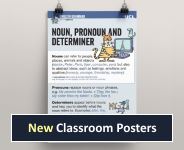Explanation
A linking word which connects (‘coordinates’) units which are equal in status. Common examples are and, or, and but. Also called a coordinator.
Englicious contains many resources for English language in schools, but the vast majority of them require you to register and log in first. For more information, see What is Englicious?

